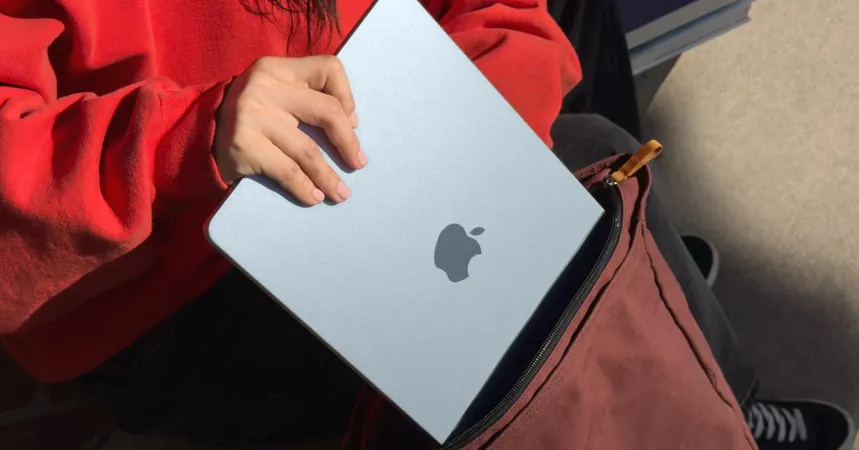
Big Miss: The M4 MacBook Air Lacks Essential Thermal Upgrades
2025-03-29
Author: Ming
Recent Thermal Innovations
The M4 iPad Pro and the iPhone 16 series both introduced noteworthy upgrades designed to combat overheating. With the iPad Pro, Apple integrated graphite sheets into the housing, alongside a copper heat spreader cleverly concealed in the Apple logo. These enhancements have resulted in a significant 20% improvement in thermal management, showcasing Apple's ability to innovate under pressure.
On the smartphone side, after receiving customer complaints regarding overheating with the iPhone 15 Pro featuring the A17 Pro chip, Apple took action. The iPhone 16 and 16 Plus saw a reengineering of the internal design, allowing for a larger battery that not only improves longevity but also enhances heat dissipation, making it easier for users to maintain performance during intensive tasks.
MacBook Air: A Step Backward?
The flaw in Apple's strategy appears most starkly in the MacBook Air. The 2022 redesign leaned heavily on a thinner profile, replacing the substantial metal heatsink with a mere graphite sheet and lacking adequate heat spreaders. This shift meant that the M2 MacBook Air was more prone to thermal throttling under demanding workloads than its predecessors.
Hopes were high that the introduction of advanced thermal features in the iPad Pro might signal similar enhancements for the M4 MacBook Air. Unfortunately, when the device was unveiled earlier this month, it became clear that these expectations were unfounded. Apple provided no references to thermal upgrades, and a subsequent teardown by iFixit revealed that the internal components were largely unchanged from earlier iterations.
This absence of innovation is disappointing, particularly as the MacBook Air represents a significant segment of users who often rely on the device for intensive tasks. With Apple’s most lightweight laptop lacking thermal solutions, users may find themselves struggling to maintain performance during critical operations.
Why it Matters
Critics argue that many MacBook Air users may not engage in tasks that require sustained high performance, making the need for advanced thermal management seem less critical. Nevertheless, if a powerful device like the iPad Pro can feature an intricate cooling system while operating iPadOS, it raises the question of why the MacBook Air, which often handles similar or heavier workloads, does not follow suit.
For those seeking top-tier performance, the conclusion is clear: users requiring advanced capabilities will have to opt for the MacBook Pro sporting the M4 Pro or M4 Max chips. The decision comes down to prioritizing performance versus portability, leaving many to wonder if the MacBook Air can truly keep pace with the rest of Apple's offerings in an increasingly demanding tech landscape.
In an age where device cooling is paramount, it remains to be seen how Apple plans to address these issues moving forward.


 Brasil (PT)
Brasil (PT)
 Canada (EN)
Canada (EN)
 Chile (ES)
Chile (ES)
 Česko (CS)
Česko (CS)
 대한민국 (KO)
대한민국 (KO)
 España (ES)
España (ES)
 France (FR)
France (FR)
 Hong Kong (EN)
Hong Kong (EN)
 Italia (IT)
Italia (IT)
 日本 (JA)
日本 (JA)
 Magyarország (HU)
Magyarország (HU)
 Norge (NO)
Norge (NO)
 Polska (PL)
Polska (PL)
 Schweiz (DE)
Schweiz (DE)
 Singapore (EN)
Singapore (EN)
 Sverige (SV)
Sverige (SV)
 Suomi (FI)
Suomi (FI)
 Türkiye (TR)
Türkiye (TR)
 الإمارات العربية المتحدة (AR)
الإمارات العربية المتحدة (AR)